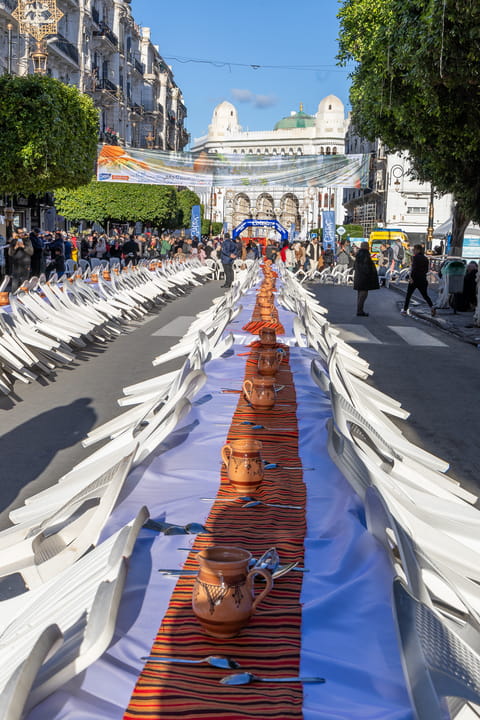Yennayer
Algiers, Algeria
Like other countries in North Africa, Algeria has a substantial Amazigh (Berber) population, divided between different groups that include the Kabyles of Kabylie, Chaoui, Tuareg, Shenwa and other smaller groups. And as in other countries in North Africa, relations between the Arab majority and the Amazigh ethnic groups have sometimes been strained at best.
Yennayer is the first month of the Berber year, possibly derived from the Latin ‘Januarius’ or perhaps simply from the Amazigh words for ‘first month’. In 2017, President Bouteflika officially recognized the 12th of January, the first day of the first month, as a public holiday under the name Yennayer.
If the crowds in the center of Algiers were any indication, the Algerians, Amazigh or not, seem to have adopted the new holiday enthusiastically. On rue M. Addoun, the restaurants had set out long lines of tables and chairs running the length of the street. When we first passed them, they were all empty, but by late afternoon the street had filled up, with crowds of people sitting down to eat celebratory couscous.
Here and there in the throng were groups of musicians or dancers in traditional Amazigh costume, most of them invisible behind a wall of Algérois snapping photos with smartphones. On place Maurice Audin, a group of women in spectacular outfits and perilously high heels sprinted toward their battered charter bus, pursued by a small crowd of picture takers. Everybody seemed to want to be part of the fun.
The only people holding back seemed to be the cops. After a brutal civil war, and with an ever-present threat of Islamist violence in some regions, Algeria is more than a little security-conscious. Any large public gathering will be attended by both uniformed and plain-clothes police in large numbers. Once you knew what to look for they were unmistakable: groups of four hard-faced young men, leaning a little too casually on a wall or a railing, and not chatting to each other but scrutinizing the crowds with hawk-like intensity.
The next day, we went to an exhibition space under the Place de la Grande Poste, where vendors and performers continued to serve up snippets of Amazigh culture to an urban population with an apparently limitless appetite for it. A sturdy middle-aged lady in a black headscarf clutched a blunderbuss of intimidating dimensions amidst a pile of earthenware tajines. A young man in a knit skullcap and waistcoat performed a rather decorous dance with a walking stick. And, best of all, there was a small army of Barbie dolls, blonde-haired and blue-eyed, dressed in meticulously-made miniature versions of Amazigh traditional costume.
